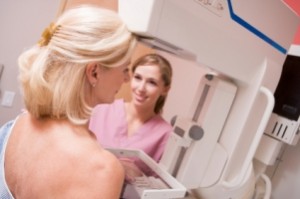 A review ordered by the British Department of Health concluded that women who get mammograms are at risk for “over-diagnosis,” according to a group of Danish scientists.
A review ordered by the British Department of Health concluded that women who get mammograms are at risk for “over-diagnosis,” according to a group of Danish scientists.
As many as 30% of all women who get a mammogram may be getting a false report, therefore enduring unnecessary cancer treatment such as chemo-therapy and surgery. They also found that for every 2000 women age 50 to 70 who are screened for 10 years, one will be saved from dying of breast cancer while several will have had unnecessary treatment. In addition, a survey suggested that out of 479 women, only 7% were aware that some cancers grow so slowly that even without treatment, it would not be of harm to a woman’s health, which had not been brought to the attention of women prior to their screenings.
Mammograms have long been a recommended procedure to detect breast cancer. It is worth noting that women in the Untied States are much more aggressively screened for breast cancer compared with women in Great Britain. The recommended age to begin screening for Americans is 40 and the frequency is once per year. British women are recommended to get their first screening at the age of 50, and not to get them but once every three years. The aforementioned statistics could explain these differences.
For many women, getting a mammogram means they are helping to “prevent” breast cancer from occurring. This is simply not true. In addition, women who undergo this type of breast cancer screening are at risk for getting a false reading which could cause them to suffer from unnecessary treatment such as chemotherapy or surgery.
Pamphlets suggesting the need for yearly mammograms have yet to explain both sides. The British National Health Service for example claimed that for every 400 women screened, one life is saved, but they fail to mention further statistics. The fact that mammograms do detect cancer yet can also detect benign tumors and some cancers that grow too slowly to be of any risk is being brought to our attention.
Slow growing cancers are said to look no different than rapidly aggressive ones, so it is nearly impossible to decide which ones can be left alone. Many health experts believe it is better to be safe than sorry, but as we take a further look into the accuracy of these mammograms, how are we to know what to do?
via: nytimes.com and huffingtonpost.co.uk
Also Read:
Women with Breast Cancer Benefit Emotionally from Yoga
